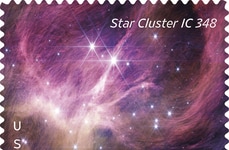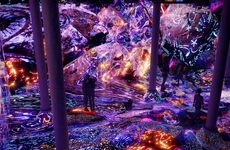
'BOSS' is a 3D Scan of One-Quarter of the Universe
With its dense clustering of colored dots, the Baryon Oscillation Spectroscopic Survey, or BOSS, looks like a mapping of stars -- however, BOSS isn't a star map; it's a galactic map. In other words, each of the pixel-sized dots on the BOSS galactic map is an entire galaxy that contains about half a trillion stars.
The galactic map covers approximately one-quarter of space, or 650 billion cubic light years, so its staggering scale makes sense. Researchers within the Sloan Digital Sky Survey III, who charted the map, measured sound waves that are a sort of echo from the Big Bang, allowing them to precisely estimate the galaxies' relative locations in space.
Scientific visualizations like the BOSS program give everyday laymen the opportunity to better understand the astronomical entity that is the universe.
The galactic map covers approximately one-quarter of space, or 650 billion cubic light years, so its staggering scale makes sense. Researchers within the Sloan Digital Sky Survey III, who charted the map, measured sound waves that are a sort of echo from the Big Bang, allowing them to precisely estimate the galaxies' relative locations in space.
Scientific visualizations like the BOSS program give everyday laymen the opportunity to better understand the astronomical entity that is the universe.
Trend Themes
1. Galactic Mapping - Disruptive innovation opportunity: Develop advanced technologies to increase the precision and coverage of galactic mapping for astronomical research and navigation purposes.
2. Big Data Visualization - Disruptive innovation opportunity: Create more sophisticated tools for processing and visualizing large amounts of complex data, with applications in fields like astrophysics, medicine, and finance.
3. Citizen Science - Disruptive innovation opportunity: Develop platforms that enable non-scientists to participate in or contribute to large-scale scientific projects, fostering greater public engagement and education.
Industry Implications
1. Astronomy - Disruptive innovation opportunity: Combine advanced technology and scientific research to deepen our understanding of the cosmos, improving astronomical navigation and communication technologies.
2. Data Science - Disruptive innovation opportunity: Develop cutting-edge algorithms and AI-powered tools that can process and analyze vast amounts of data across industries and applications.
3. Education - Disruptive innovation opportunity: Design accessible, interactive learning tools that engage learners with complex scientific research and promote broader public education and interest in STEM fields.
3
Score
Popularity
Activity
Freshness























